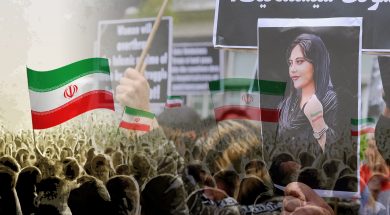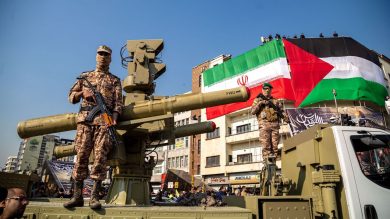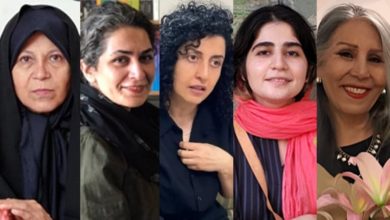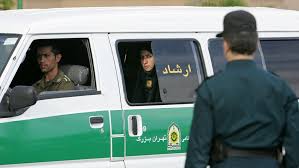The Islamic Revolutionary Guard Corps (IRGC) has become a central force in shaping Iran’s foreign policy and extending its influence across the Middle East. Through its elite Quds Force and a network of proxy groups, the IRGC has cultivated a strategy of asymmetric warfare that seeks to challenge regional adversaries, undermine governments, and consolidate Iran’s geopolitical power. This analysis examines the IRGC’s activities in key countries such as Lebanon, Syria, Iraq, and Yemen, highlighting the destabilizing effects of its operations and their implications for regional and global security.
Lebanon: Empowering Hezbollah and Weakening Sovereignty
One of the IRGC’s earliest and most enduring successes in the region has been its partnership with Hezbollah in Lebanon. Established in the 1980s with IRGC support, Hezbollah has grown into a powerful political, military, and economic force.
1. Military Arm of Iran
• Hezbollah serves as the IRGC’s most effective proxy, capable of projecting Iranian influence directly to Israel’s borders.
• The IRGC provides Hezbollah with funding, training, and advanced weaponry, including precision-guided missiles and drones.
2. Undermining Lebanese Sovereignty
• Hezbollah operates as a state within a state, weakening Lebanon’s central government and security institutions.
• Its alignment with Iranian interests often comes at the expense of Lebanese national priorities, dragging the country into conflicts such as the Syrian Civil War.
3. Regional Instability
• Hezbollah’s militant activities, including attacks on Israel and support for other IRGC-backed groups, perpetuate cycles of violence in the region.
• The group’s involvement in drug trafficking and money laundering extends its destabilizing influence globally.
Syria: Propping Up the Assad Regime
Syria has been a critical theater for the IRGC’s operations, particularly since the outbreak of the Syrian Civil War in 2011. The IRGC’s intervention has ensured the survival of Bashar al-Assad’s regime, bolstering Iran’s strategic position in the region.
1. Military Intervention
• The IRGC, through the Quds Force, deployed advisors, fighters, and resources to assist Assad’s forces, coordinating with Hezbollah and other militias.
• The IRGC recruited and deployed thousands of fighters from Afghanistan, Iraq, and Pakistan to bolster pro-Assad forces.
2. Establishing a Land Corridor
• By securing a route through Iraq and Syria to Lebanon, the IRGC created a land corridor that facilitates the movement of weapons and fighters.
• This corridor strengthens Iran’s ability to support Hezbollah and other proxies while countering U.S. and Israeli influence.
3. Humanitarian Impact
• The IRGC’s operations have contributed to atrocities in Syria, including the bombing of civilian areas and forced displacement of millions.
• Its support for Assad has prolonged the conflict, exacerbating one of the worst humanitarian crises in modern history.
Iraq: Exploiting Post-Invasion Instability
The U.S.-led invasion of Iraq in 2003 created a power vacuum that the IRGC quickly exploited. Through its backing of Shia militias, the IRGC has entrenched itself in Iraq’s political and security landscape.
1. Popular Mobilization Forces (PMF)
• The IRGC-backed PMF, formed to fight ISIS, includes militias like Kata’ib Hezbollah and Asa’ib Ahl al-Haq, which operate as extensions of Iranian policy.
• These groups have been accused of human rights abuses, sectarian violence, and undermining Iraq’s sovereignty.
2. Political Influence
• The IRGC leverages its ties with Shia political parties and leaders to shape Iraq’s government, often prioritizing Iranian interests over Iraqi stability.
• Its interference has deepened sectarian divisions and hindered efforts to rebuild Iraq’s fractured state.
3. Regional Proxy Activities
• Iraq serves as a staging ground for IRGC operations against U.S.
forces and regional adversaries, including drone and missile attacks on bases and infrastructure.
Yemen: Supporting the Houthis
The IRGC’s support for the Houthi rebels in Yemen has transformed a local conflict into a proxy war with far-reaching consequences for regional stability.
1. Military Support
• The IRGC provides the Houthis with advanced weapons, including missiles and drones, which have been used to target Saudi Arabia and the UAE.
• Iranian expertise has helped the Houthis develop increasingly sophisticated weaponry, extending their range and impact.
2. Proxy War Against Saudi Arabia
• Yemen serves as a battleground in the IRGC’s broader strategy to counter Saudi influence in the region.
• Houthi attacks on Saudi oil facilities and infrastructure have disrupted global energy markets and escalated tensions.
3. Humanitarian Crisis
• The IRGC’s support for the Houthis has contributed to the prolongation of Yemen’s civil war, exacerbating one of the world’s worst humanitarian crises.
The IRGC’s Regional Strategy
The IRGC’s activities in Lebanon, Syria, Iraq, and Yemen are part of a broader strategy to establish Iran as a dominant power in the Middle East. Key components of this strategy include:
1. Asymmetric Warfare
• By relying on proxy groups and irregular tactics, the IRGC achieves its objectives without engaging in direct military conflict.
• This approach reduces the risk of retaliation while maximizing Iran’s influence.
2. Sectarian Exploitation
• The IRGC capitalizes on Shia identity and sectarian divisions to recruit fighters, build loyalty, and justify its interventions.
• This strategy deepens sectarian tensions, fueling instability across the region.
3. Countering Adversaries
• The IRGC uses its proxies to counter the influence of the United States, Israel, and Saudi Arabia, creating a balance of power that favors Iran.
Global Implications
The IRGC’s destabilizing activities in the Middle East have significant global consequences:
1. Threats to International Security
• IRGC proxies have carried out attacks on civilian and military targets, including U.S. forces and infrastructure in the Gulf.
• The proliferation of advanced weaponry, including drones and missiles, raises the risk of regional and global conflict.
2. Humanitarian Costs
• The IRGC’s interventions have fueled wars and humanitarian crises, displacing millions and exacerbating poverty and suffering.
3. Economic Disruption
• Attacks on energy infrastructure and shipping routes orchestrated by IRGC proxies disrupt global markets and trade flows.
Countering the IRGC’s Impact
Addressing the IRGC’s destabilizing influence requires a coordinated international response:
1. Sanctions and Financial Pressure
• Targeted sanctions on IRGC affiliates and proxies can disrupt their operations and limit their resources.
2. Strengthening Regional States
• Supporting the sovereignty and capacity of states like Iraq, Lebanon, and Yemen can reduce the IRGC’s influence and restore stability.
3. Diplomatic Efforts
• Multilateral initiatives to address conflicts in Syria, Yemen, and Iraq can mitigate the IRGC’s impact and reduce regional tensions.
4. Countering Weapons Proliferation
• Enhanced international cooperation is needed to intercept weapons shipments and prevent the IRGC from arming its proxies.
Conclusion
From Lebanon to Yemen, the IRGC has left a trail of instability and conflict across the Middle East. By empowering proxy groups, exploiting sectarian divisions, and undermining state sovereignty, the IRGC has entrenched itself as a central player in the region’s most pressing crises. Countering its destabilizing influence requires sustained international efforts, including sanctions, diplomacy, and support for regional allies. Only through a comprehensive approach can the Middle East move toward peace, stability, and prosperity.
Join Our Newsletter!
Stay informed with the latest updates, news, and ways to take action in the fight for justice and global security. Sign up now to get updates delivered straight to your inbox!





